 IN MEMORY
IN MEMORY Bill Cauble and Clifford Teinert respectfully dedicate this book to the memory of Watkins Reynolds Matthews, a true inspiration and mentor to both of us.

Copyright 2002 by Bright Sky Press No part of this book may be reproduced in any form or by any electronic or mechanical means, including information storage and retrieval devices or systems, without prior written permission from the publisher, except that brief passages may be quoted for reviews. 10 9 8 7 6 5 4 Library of Congress Cataloging-in-Publication Data Cauble, Bill, 1938Barbecue, biscuits, and beans: chuck wagon cooking / Bill Cauble and Cliff Teinert; foreword by Tommy Lee Jones.
p. cm.
ISBN 1-931721-00-9 (hdcvr: alk. paper)
1. 2. 2.
Cookery, American--Western style.
I. Teinert, Cliff, 1939- II. Title. TX823 .C337 2002
641.578dc21
2002022657 BOOK AND COVER DESIGN BY: Tina Taylor
EDITED BY: Katie Dickie Stavinoha
PHOTOGRAPHY BY: Watt M. Casey, Jr. Printed in China through Asia Pacific Offset
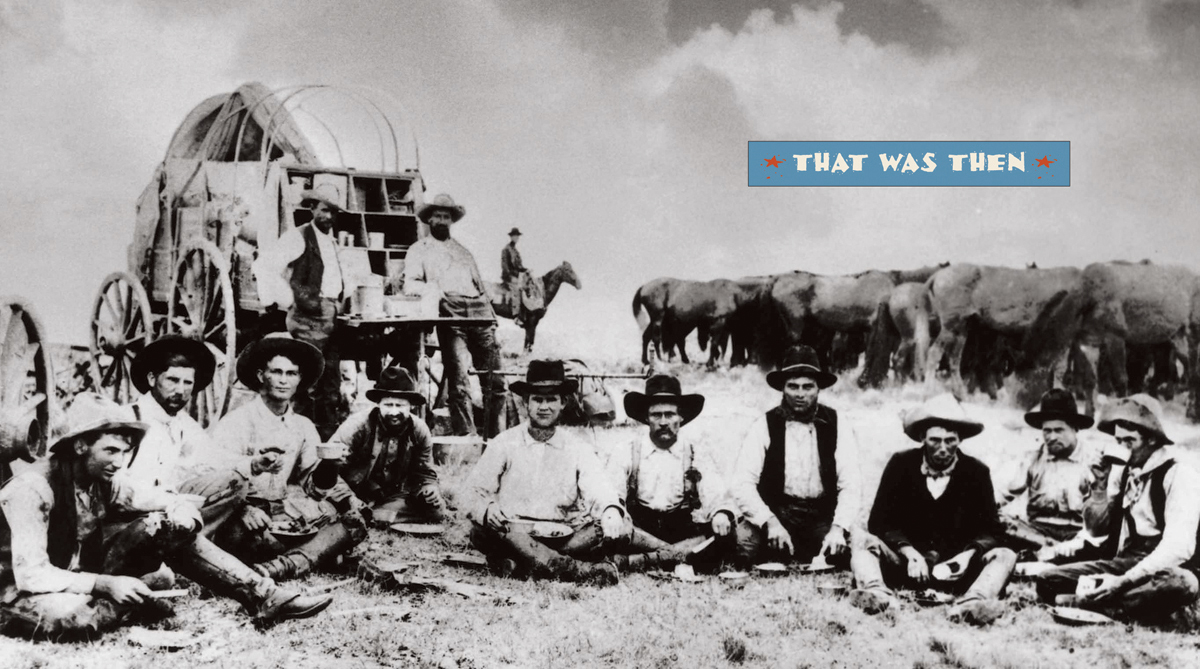
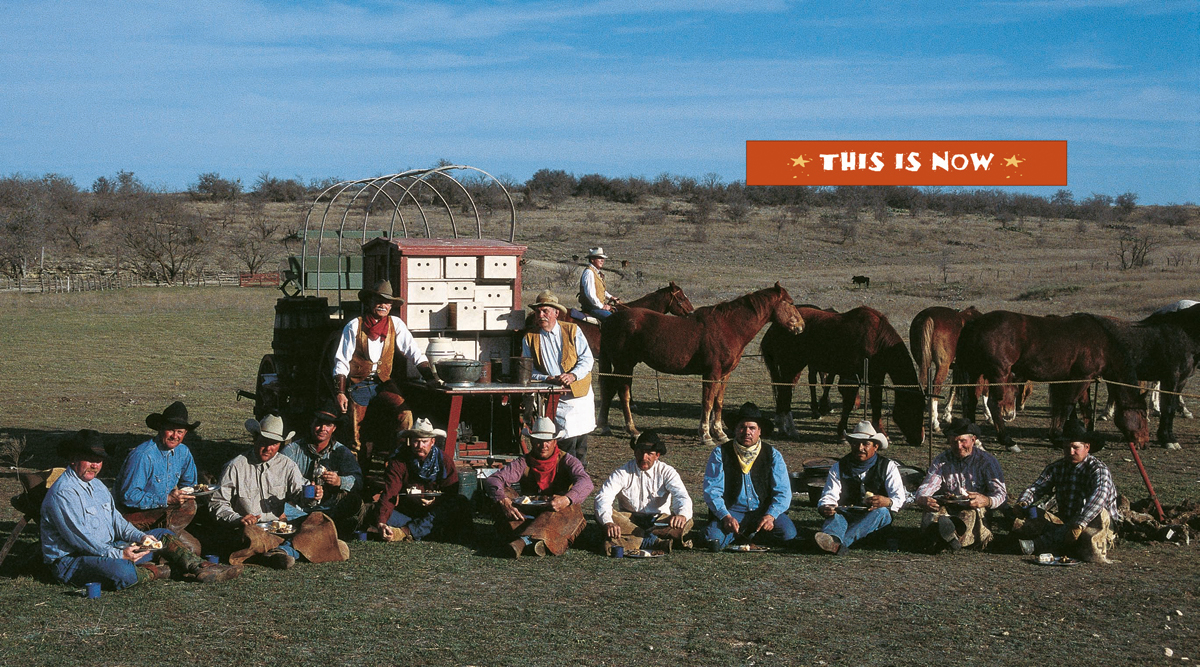

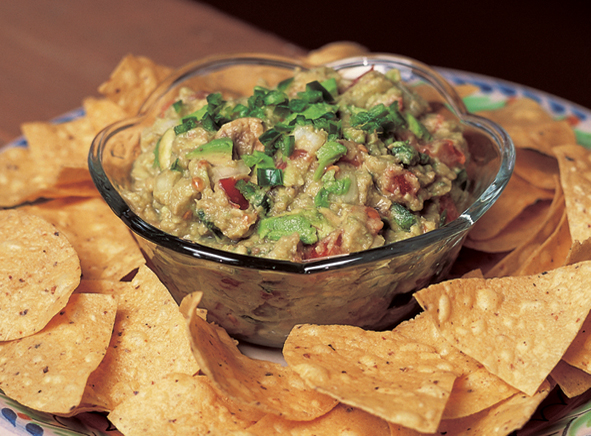
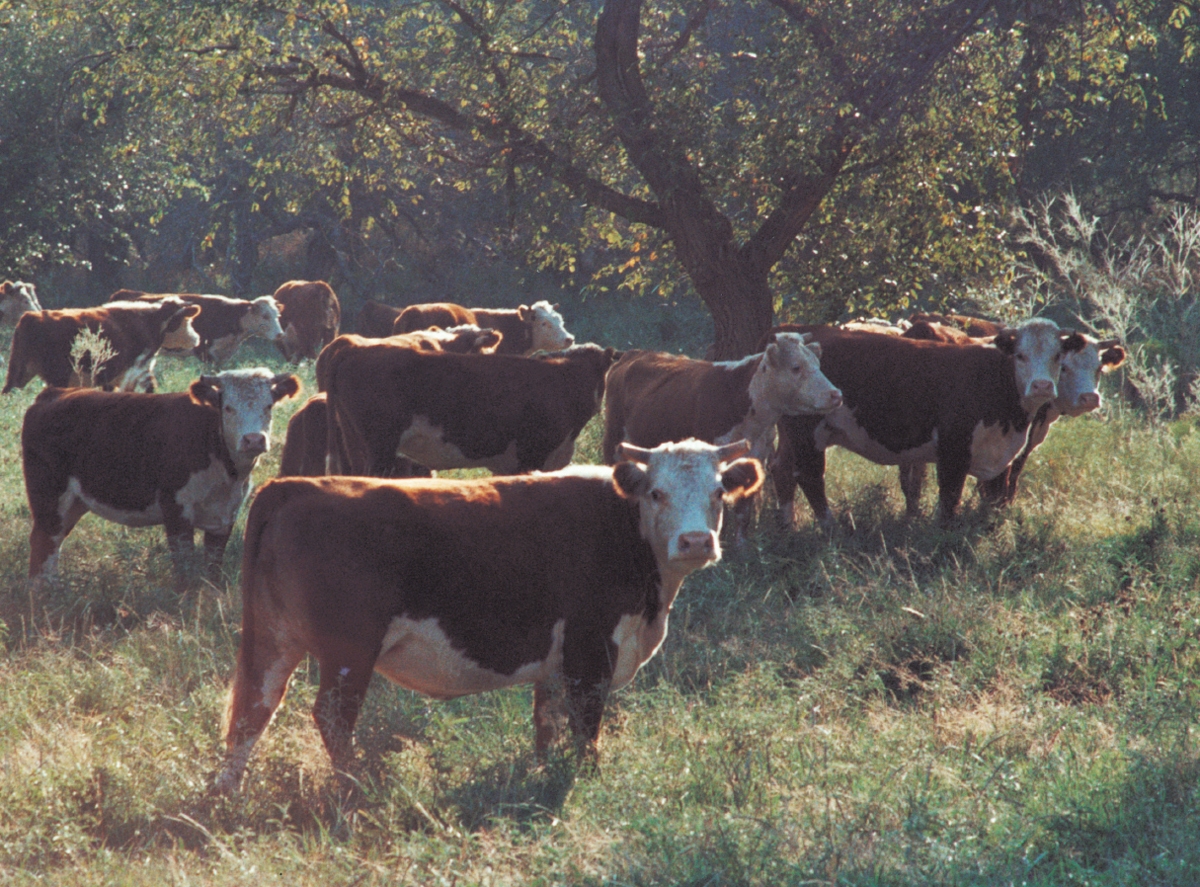 FOREWORD by Tommy Lee Jones
FOREWORD by Tommy Lee Jones A ny means of transportation has underlying social implications.
A ny means of transportation has underlying social implications.
Automobiles have brought individual independence, national petrochemical dependency, and road rage to Americans. Genghis Khan conquered most of the civilized world when he mastered the use of horses to support his military endeavors. Railroads united the East and West Coasts of the United States. And the nuclear age began when a bomb was dropped from an airplane. What about the Chuck Wagon? People who follow migratory animals have always, like any people, needed to eat. At one time or another we could slay a mastodon or an elk and eat it where it lay.
Sheep herders have always lived on their casualties. The chuck wagon, as we know it, was invented by Charlie Goodnight in the second half of the 19th century to support cattle drives from Texas to the railheads of the Northa formative socio-economic development of what Texans now call home. What did Charlie have in mind, and why is it relevant to us now? From my point of view at the WD Ranch in Culberson and Jeff Davis Counties in West Texas, we use the chuck wagon for the same reason Charlie did, because we have to. We have to keep ten cowboys out from daylight to dark for two weeks in the fall and two weeks in the spring. The distances are great, and travel time in pickups away from the cattle and back, whether it be to the headquarters or to town, would cut our work day in half. Sandwiches stuffed in saddle bags could never meet our nutritional requirements for more than a day or two.
The wagon provides three good meals a day and keeps us not only happy, but places us in our rightful historical perspective. By this I mean it makes us better hands. If we spend 30 minutes eating a beautiful meal off the wagon and go back to work, we will stress the cattle less and be less likely to get a horse or a man hurt than if we spent several hours on the road hunting fast food in the middle of the day. Why should the wagon mean anything to anybody else? They are a lot of fun. Many people are reminded of Western movies and television shows. Other people are happy to see a part of their culture that hasnt died yet.
Clifford Teinert, Bill Cauble, and others like them have studied and tracked the techniques of chuck wagon cooking and, through this book, made them available to all. The backyard cook can improve greatly on the usual barbecue he serves his family and friends while keeping a good tradition alive. Nostalgia, like any other form of sentimentality, is dangerous and often fatal to culture. Insofar as you are interested in having a culture, you are invited to use this book for the right reasonbecause you have to. 
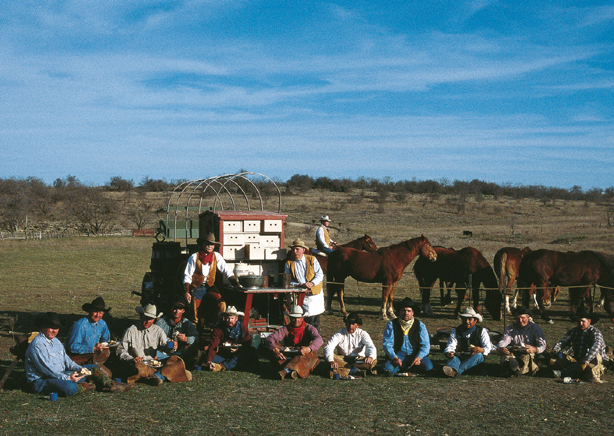
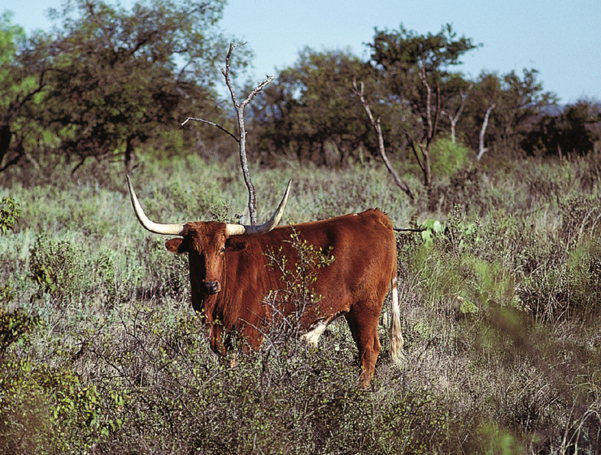
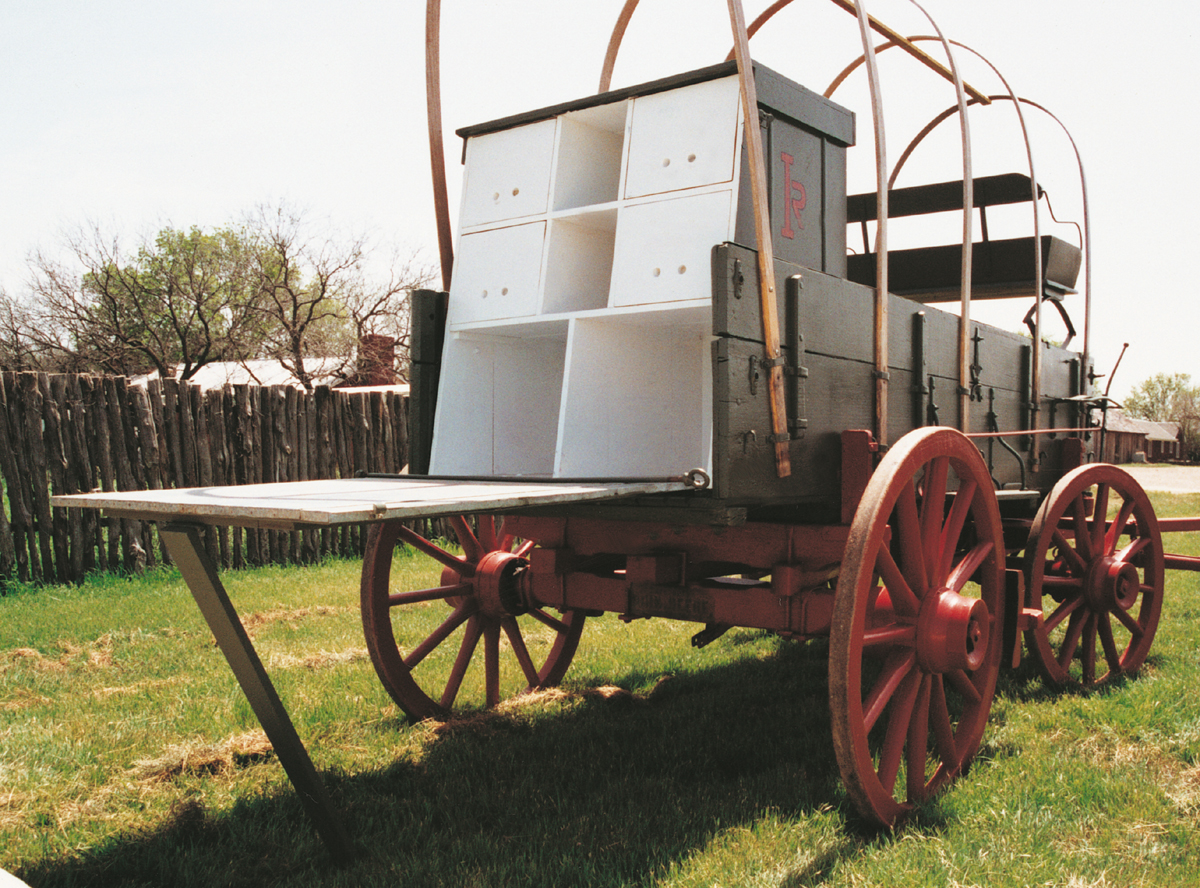 CHUCK WAGON HISTORYby Lawrence Clayton T o many people, two scenes epitomize the Old West. The first is a trail herd of Longhorn cattle strung out across a rolling landscape.
CHUCK WAGON HISTORYby Lawrence Clayton T o many people, two scenes epitomize the Old West. The first is a trail herd of Longhorn cattle strung out across a rolling landscape.
The other is a chuck wagon with cowboys lounging around its smoky campfire while the crusty cook turns out sourdough biscuits, beans, fried beef and coffee. These two scenes were an authentic part of the Western experience. The wagon was the center of the cowboys life where they slept, ate, doctored their ills and shared experiences; it symbolized home in a land where permanency was scarce. While time has erased many of those wagons, a group of chuck wagon aficionados resurrected many details and provided authenticity. Bill Cauble and Clifford Teinert were original members of the group. Bill has been a ranch cook as well as a chuck wagon cook for many years.
He has also rebuilt a wagon using the information on appropriateness of wood and hardware. Clifford has a long history of wagon cooking, even as a professional caterer of considerable reputation. He was the first person to act on the idea of catering from a chuck wagon and formed his Texas Trails Chuck Wagon Company in 1970. Cauble, Teinert and others had watched the chili cookoffs take on the air of a circus with little or no effort to fit into any historically oriented tradition, if there was one to fit into. Chuck wagon cooking is different because there is strong tradition. The revival of interest brought many amateurs into the cookoffs and other western-oriented events.
Those amateurs outfitted their wagons with inappropriate homemade boxes. Too, variations from the authentic included menu items that would not have graced the sparse setting of the wagon cooks domain. As a result of the efforts of Cauble, Teinert and others, the Western Chuck Wagon Associations purpose is to perpetuate the heritage of the trail drives, especially as reflected in the chuck wagons and Dutch oven cooking. To accomplish this goal, theyve established guidelines to assist people in achieving authenticity. An ultimate aim is to create a registry of authentic wagons to be housed at the National Cowboy and Western Heritage Museum, formerly known as the National Cowboy Hall of Fame. 

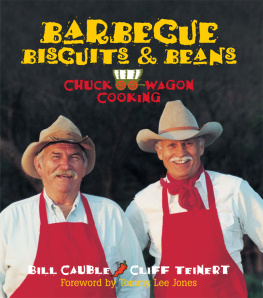
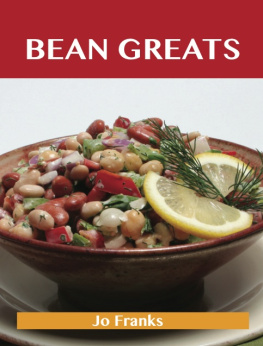
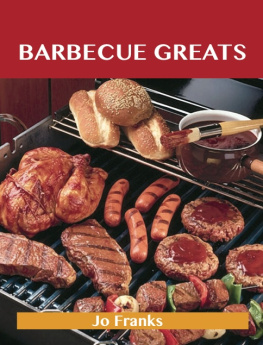

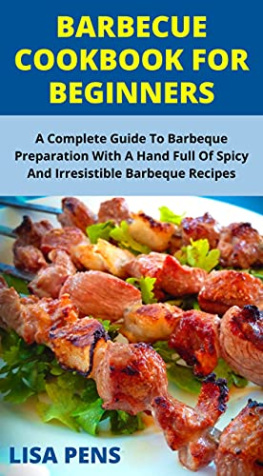
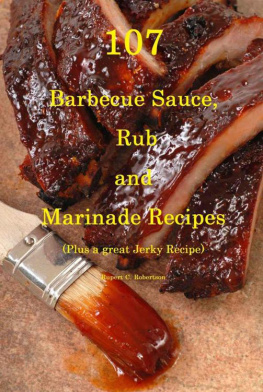
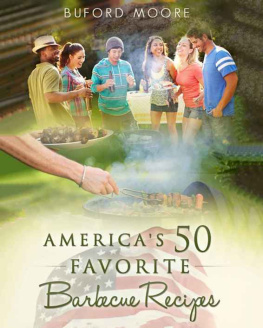
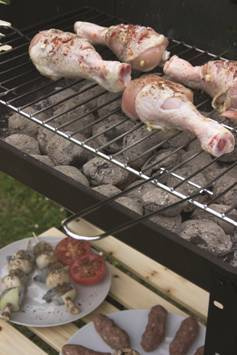

 IN MEMORY Bill Cauble and Clifford Teinert respectfully dedicate this book to the memory of Watkins Reynolds Matthews, a true inspiration and mentor to both of us.
IN MEMORY Bill Cauble and Clifford Teinert respectfully dedicate this book to the memory of Watkins Reynolds Matthews, a true inspiration and mentor to both of us.  Copyright 2002 by Bright Sky Press No part of this book may be reproduced in any form or by any electronic or mechanical means, including information storage and retrieval devices or systems, without prior written permission from the publisher, except that brief passages may be quoted for reviews. 10 9 8 7 6 5 4 Library of Congress Cataloging-in-Publication Data Cauble, Bill, 1938Barbecue, biscuits, and beans: chuck wagon cooking / Bill Cauble and Cliff Teinert; foreword by Tommy Lee Jones.
Copyright 2002 by Bright Sky Press No part of this book may be reproduced in any form or by any electronic or mechanical means, including information storage and retrieval devices or systems, without prior written permission from the publisher, except that brief passages may be quoted for reviews. 10 9 8 7 6 5 4 Library of Congress Cataloging-in-Publication Data Cauble, Bill, 1938Barbecue, biscuits, and beans: chuck wagon cooking / Bill Cauble and Cliff Teinert; foreword by Tommy Lee Jones.




 FOREWORD by Tommy Lee Jones
FOREWORD by Tommy Lee Jones A ny means of transportation has underlying social implications.
A ny means of transportation has underlying social implications.


 CHUCK WAGON HISTORYby Lawrence Clayton T o many people, two scenes epitomize the Old West. The first is a trail herd of Longhorn cattle strung out across a rolling landscape.
CHUCK WAGON HISTORYby Lawrence Clayton T o many people, two scenes epitomize the Old West. The first is a trail herd of Longhorn cattle strung out across a rolling landscape.